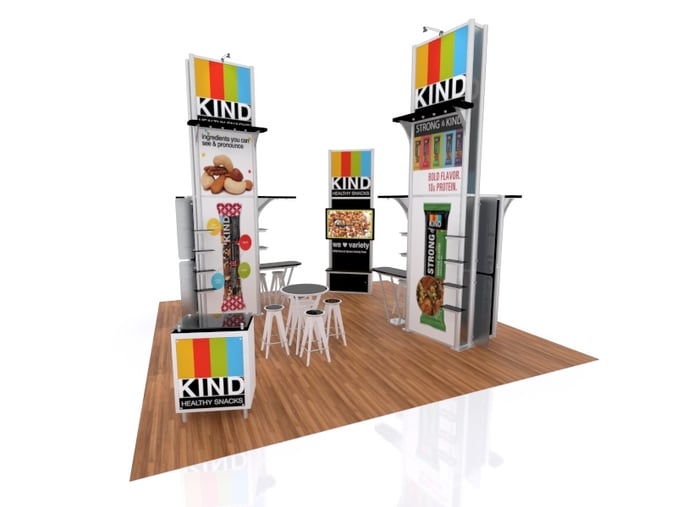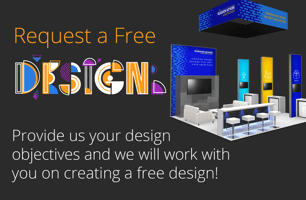You've probably heard of solution selling -- maybe it's your strategy of choice when you are in your booth at a trade show event. Solution selling is a sales methodology that became popular in the 1980s. The formula is pretty simple: The salesperson diagnoses her prospect’s needs, then recommends the right products and/or services to fill those needs. The prospect might not know he has a problem or opportunity, let alone what it looks like, how urgent or important it is, and how he should address it. That makes the salesperson an important resource; not only can she help her prospect understand his situation, she can also help him react to it.

When Is Solution Selling Used?
Solution selling is ideal for industries with highly customized products and/or packages. For example, a company who offers a cloud storage platform along with maintenance and security services will probably create a unique bundle for each of its customers. The salesperson will figure out how much data her prospect needs to store, how many devices he'll be accessing his files on, what kind of extra features and support he'll need, and so forth.
Get Started With Solution Selling
Use this three-step plan to begin solution selling:
1. Identify Common Pain Points
Figuring out your customers’ most common pain points might be the most important part of the process -- without this information, you can’t effectively target prospects or present your solution.
Analyze your won deals to see which problems prompted prospects to buy your product. Ask them, “What factored into your decision to work with us?” and “When did you decide to solve [problem], and why?”
2. Develop Your Questions
Once you’ve figured out the most pressing problems your product solves for buyers, develop a set of questions that’ll help you diagnose prospects.
Having the right questions prepared means you’ll spend the majority of the sales conversation focused on the buyer and their company, rather than your product and its features.
Start with broad, open-ended questions that probe into the relevant aspects of your prospect’s business. Then get more narrow -- you’re looking for specific facts and figures that will help you build a case for your solution.
3. Practice Selling Value
Solution selling is effective because it focuses on the ROI of a product, not its feature set or sticker price. Whether you’re a sales manager or individual salesperson, make sure you understand and can demonstrate your product’s value.
It might be helpful to consider these questions:
- How is life easier with your product? Which challenges or tasks are eliminated or reduced
- Does your product save the buyer time? If so, how much? What could they accomplish in those minutes, hours, or days?
- Does your product save the buyer money? If so, how much? What could they accomplish with that amount?
- How does your product influence others’ perception of your prospect? Do they look more credible, important, effective, or successful?
- What’s the impact on your prospect’s bottom line one month after buying your product? Six months? A year?
Practice highlighting the answers to these questions to your prospects.
Solution Selling Sales Process
“Solution selling” is used pretty broadly these days, but salespeople using this methodology typically follow this sales process:
- Prospect: Look for a buyer with a problem their product solves
- Qualify: Understand the decision-making unit (DMU)
- Discovery: Diagnose the buyer’s needs
- Add value: Develop a customer champion; gain access to key decision makers
- Present: Share a custom solution; demonstrate its ROI
- Close: Come to a mutually beneficial agreement
Solution Selling Questions
To accurately diagnose your prospect’s pain points, you need the right questions. There are three main goals of this stage (typically the discovery call):
- Identify the causes: Which factors are responsible for the buyer’s pain? How are they ranked in terms of importance and impact?
- Calculate the magnitude: How is this pain affecting your prospect, their team, other departments, and/or the entire company? How many people will benefit from solving the problem?
- Get buy-in: Gauge the buyer’s interest in life with your product. Are they excited about the solution you can provide?
To give you an idea, here are sample questions for each objective.
Identify the causes:
- How has [problem] gotten to [current state]?
- How significant is [factor]?
- Have you seen [factor they haven’t considered] making any impact on [problem]?
Calculate the magnitude:
- How has this problem changed your [daily, weekly] workload and focus?
- How has this problem affected your [coworkers, boss, direct reports]?
- What does [job title] think about this problem?
Get buy-in:
- In a world where [problem] doesn’t exist, what’s different about [your results, your priorities, the company’s success]?
- We can solve [problem] with [X solution]. What do you think?
Is Solution Sales Dead?
Some believe solution selling isn’t effective anymore. The Challenger Sale authors Brent Adamson, Matt Dixon, and Nicholas Toman argue, “Customers didn’t know how to solve their own problems, even though they often had a good understanding of what their problems were. But now, owing to increasingly sophisticated procurement teams and purchasing consultants armed with troves of data, companies can readily define solutions for themselves.”
A CEB (now Gartner) study revealed B2B prospects complete nearly 60% of their buying decision -- researching options, ranking them, deciding on purchasing criteria, and comparing prices -- before talking to a salesperson.
For that reason, Adamson, Dixon, and Toman say a solution sales rep “can be more of an annoyance than an asset.”
But solution selling definitely hasn’t lost all relevance. First, it’s still possible to reveal problems buyers don’t know they have. In fact, that’s the concept Adamson, Dixon, and Toman preach in The Challenger Sale.
Salespeople who follow this model look for customers with emerging needs or are in flux who can make decisions quickly. For example, a rep might target a company with a brand-new CEO who’s looking to make her mark.
“Since they’re already reexamining the status quo, these customers are looking for insights and are naturally more receptive to the disruptive ideas that star performers bring to the table,” the authors write.
They give an example of a top business services salesperson who walked into an hour-long RFP presentation with several executives.
He handed them his firm’s report.
“Because we have only 60 minutes together, I’m going to let you read that on your own,” the rep said. “I’d like to use our time to walk you through the three things we believe should have been in the RFP but weren’t, and to explain why they matter so much.”
The executive team dismissed the other two vendors and began the RFP process from scratch.
Is this solution selling? In this example, the salesperson didn’t conform to his prospect’s needs -- he redefined them. Nonetheless, the focus on needs and solutions is still there. I’d say this is an updated form of solution selling.
The core principles of solution selling are valuable whether you follow the methodology to the tee or use a different one: Consider how your product can help your prospect specifically, then craft them a custom solution or strategy. Take this approach, and you'll never hurt for sales.
Written by Aja Frost | @ajavuu. Full article can be found at - https://blog.hubspot.com/sales/solution-selling






